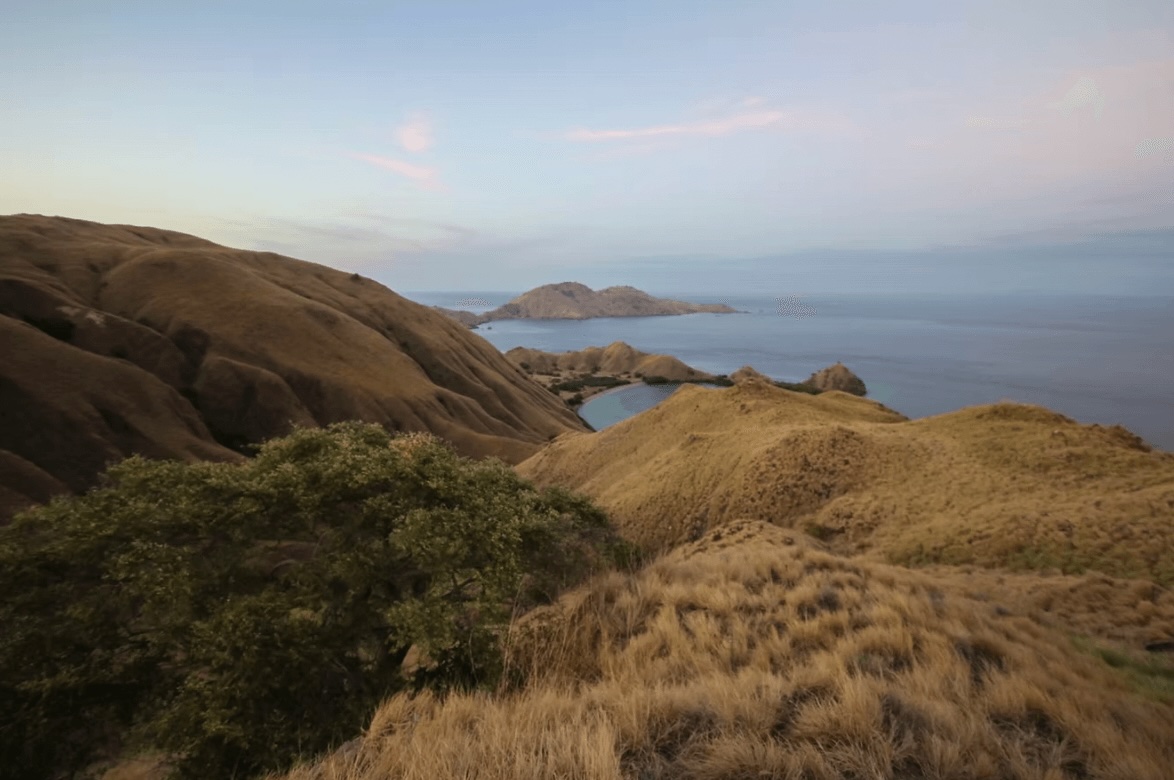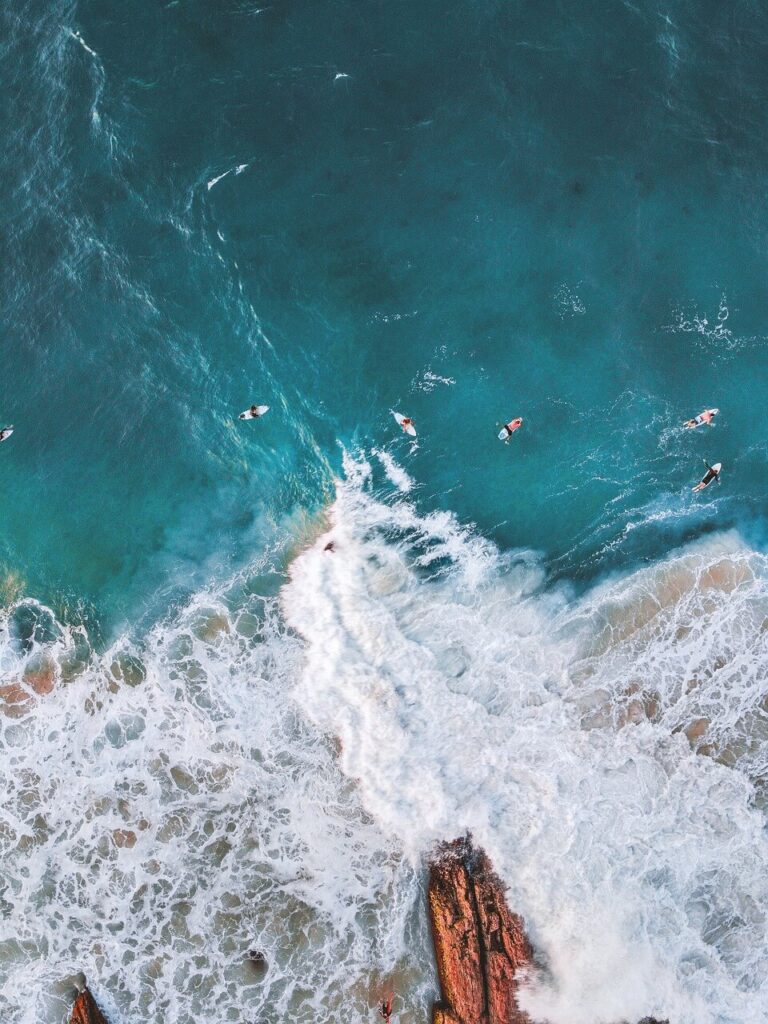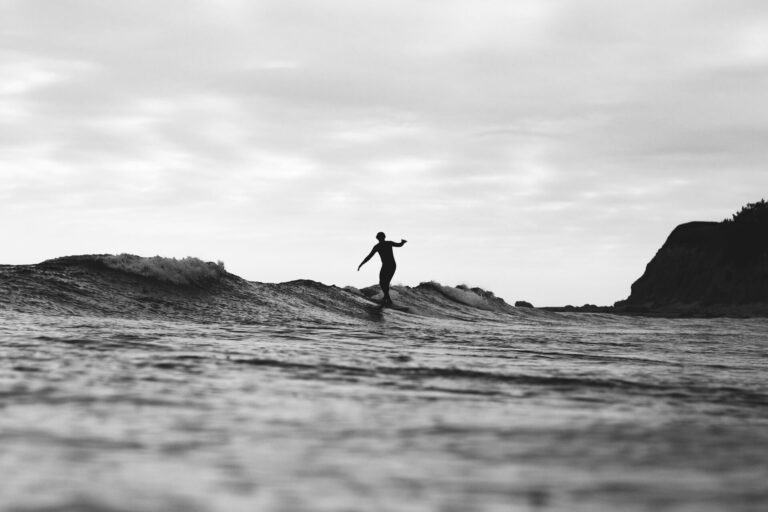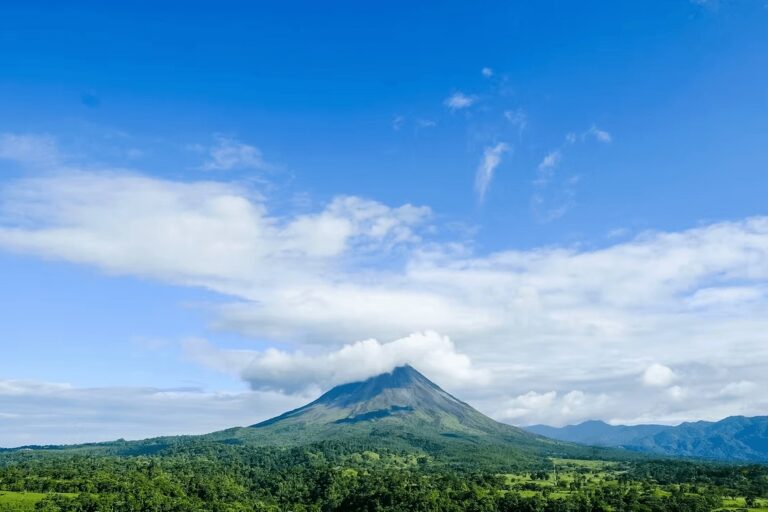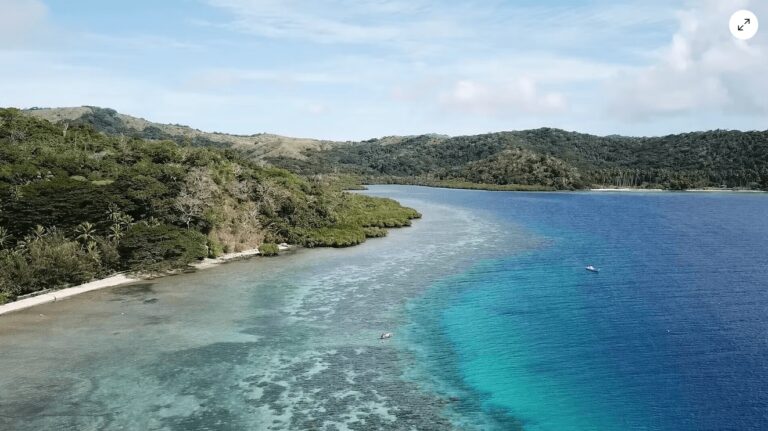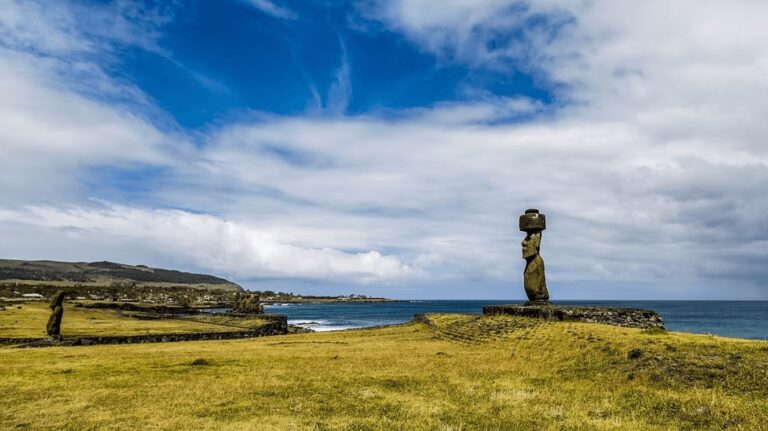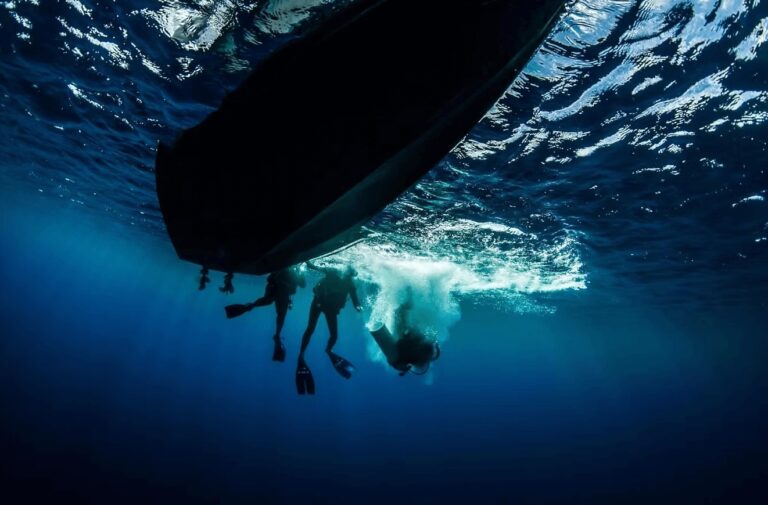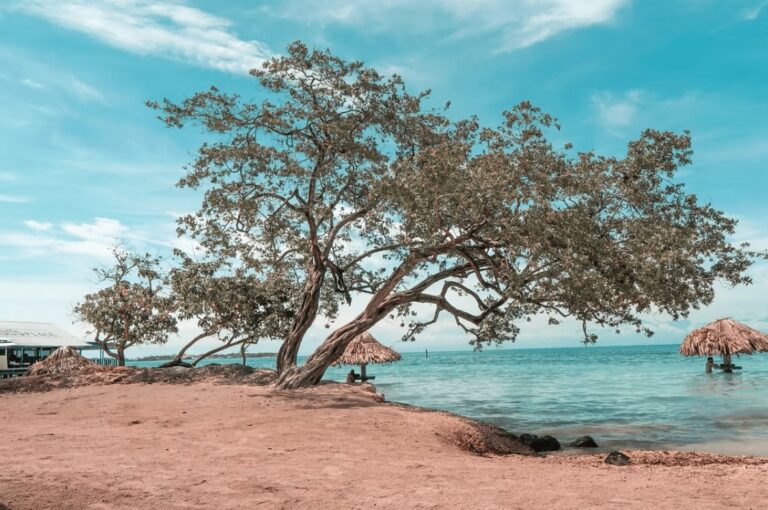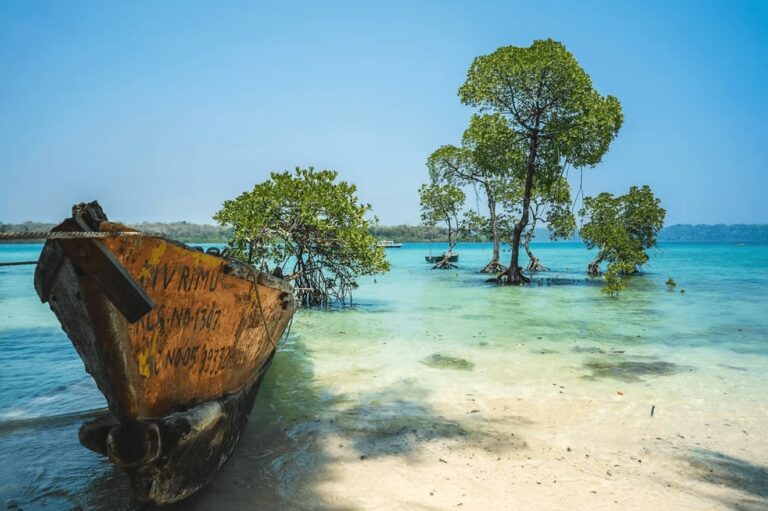9 Incredible Places to Dive in Indonesia: Sustainable Scuba Travel
Looking for the best places to dive in Indonesia? Discover 9 incredible dive destinations in this Southeast Asian archipelago, including Komodo, Raja Ampat and Alor. We’ll also highlight eco-friendly dive resorts in Indonesia to help you plan a sustainable scuba vacation.
Home to over 25% of the world’s fish species and more than 70% of global coral species, Indonesia is an epicentre of marine biodiversity.
Its incredible concentration of aquatic life and habitat diversity make this island nation in the Coral Triangle a treasure trove for scuba divers.
Whether your passion lies in spotting macro critters, encountering pelagics or experiencing the thrill of drift diving, Indonesia has it all in spades.
It also boasts exceptional diving infrastructure, from world-class liveaboards to luxury dive resorts.
In this article, we’ll introduce 9 of the best places to dive in Indonesia and explain what makes them unique. For each Indonesia dive destination, we’ll also highlight eco-friendly accommodations for a sustainable stay.
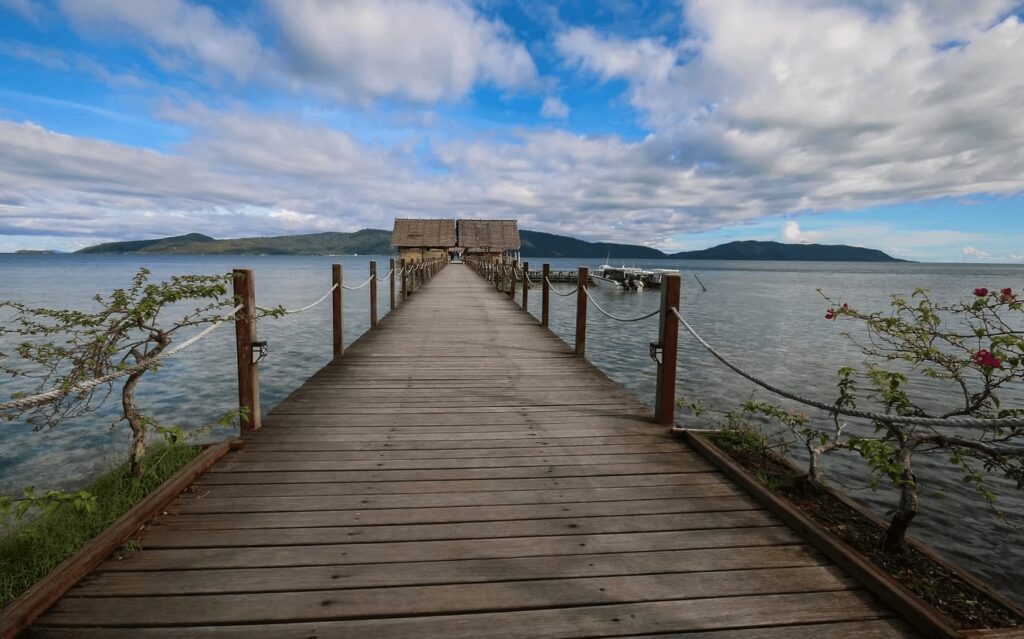
This article contains affiliate links, which means when you make a purchase through that link, we earn a small commission. Affiliate links come at no cost to you and ensure our content remains free!
Komodo National Park
Best place for affordable diving in Indonesia
In the heart of the Indonesian archipelago lies Komodo National Park, which was designated a UNESCO World Heritage Site in 1991.
While the park is most famous for its resident Komodo dragon – the world’s largest living lizard species – its natural wonders extend far beyond these legendary reptiles.
Underwater, the archipelago provides a habitat for a diverse array of marine life, including manta rays and reef sharks patrolling the reefs. As a result, it’s become a bucket list dive destination in Indonesia.
Scuba divers who venture into Komodo’s subaquatic realm are treated to incredible biodiversity, from brightly-coloured corals to abundant schools of tropical fish.
Diving in Komodo can be divided into three distinct regions – North, Central and South.
The northern region is renowned for its exhilarating drift dives, where strong currents draw in a multitude of pelagic species. Though the currents require a higher level of experience, this is precisely what makes diving in Komodo so electrifying.
Central Komodo is no less captivating, boasting world-class dive sites like Batu Bolong and Manta Point. Here, up to 50 of these majestic creatures can be seen mating and feeding at any one time. It’s one of the best spots for manta diving in Indonesia.
Even the southern region, which experiences cooler water temperatures, offers exceptional critter diving. In these waters, there’s the chance to spot unique species not found in more well-known macro destinations. It’s a fantastic area to visit for muck diving in Indonesia.
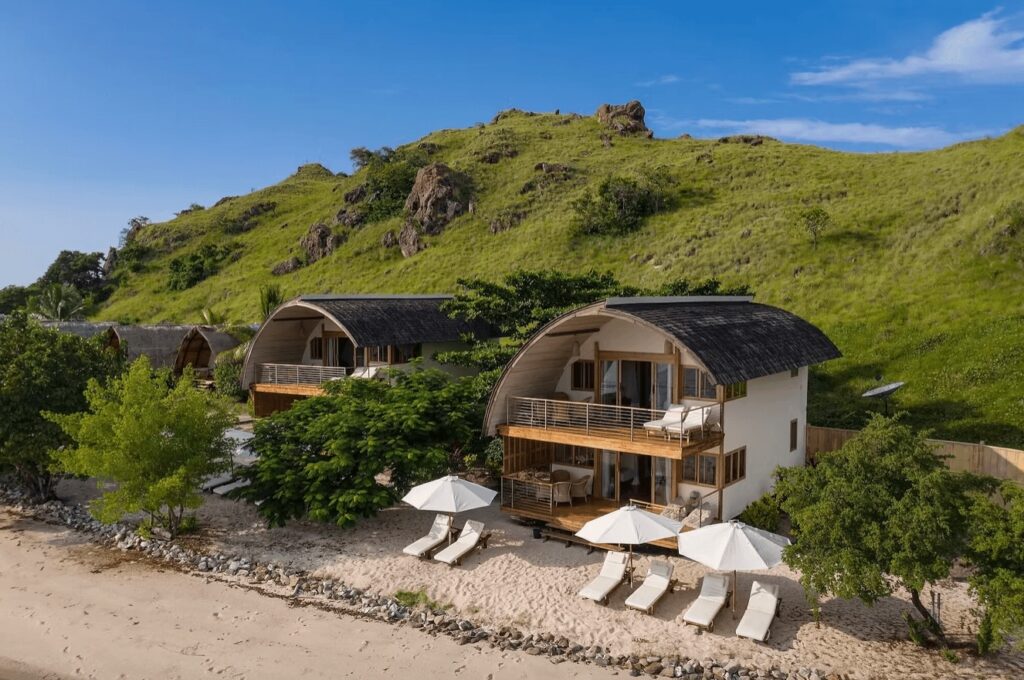
Eco-friendly dive resorts in Komodo
Komodo Resort
Situated at the entrance of Komodo National Park is this highly rated Indonesia dive resort. It offers easy access to all of the archipelago’s exceptional diving opportunities.
Led by experienced instructors, the on-site PADI dive centre provides equipment rentals and guided tours suitable for divers of all levels.
The traditional wooden bungalows at this eco-friendly Komodo dive resort are designed to provide a comfortable stay. All while prioritising the preservation of the delicate environment.
“This place is so unique and special.” – Alex (read more reviews here)

Sudamala Resort
Dotted with bungalows featuring traditional alang-alang roofs and adorned with bougainvillea, Sudamala is a luxury eco-resort in Komodo.
Its in-house green team, Sobat Hijau, conducts a range of initiatives dedicated to environmental sustainability. This ensures you can minimise your footprint during your stay.
Just a short distance from this eco-friendly Komodo Resort are coral reefs perfect for snorkelling and diving. Meanwhile, the onsite spa offers Balinese-inspired treatments in a bamboo pavilion overlooking the sea.
“A heavenly getaway!” – Sonali (read more reviews here)
Discover more eco-friendly dive resorts in Komodo here.
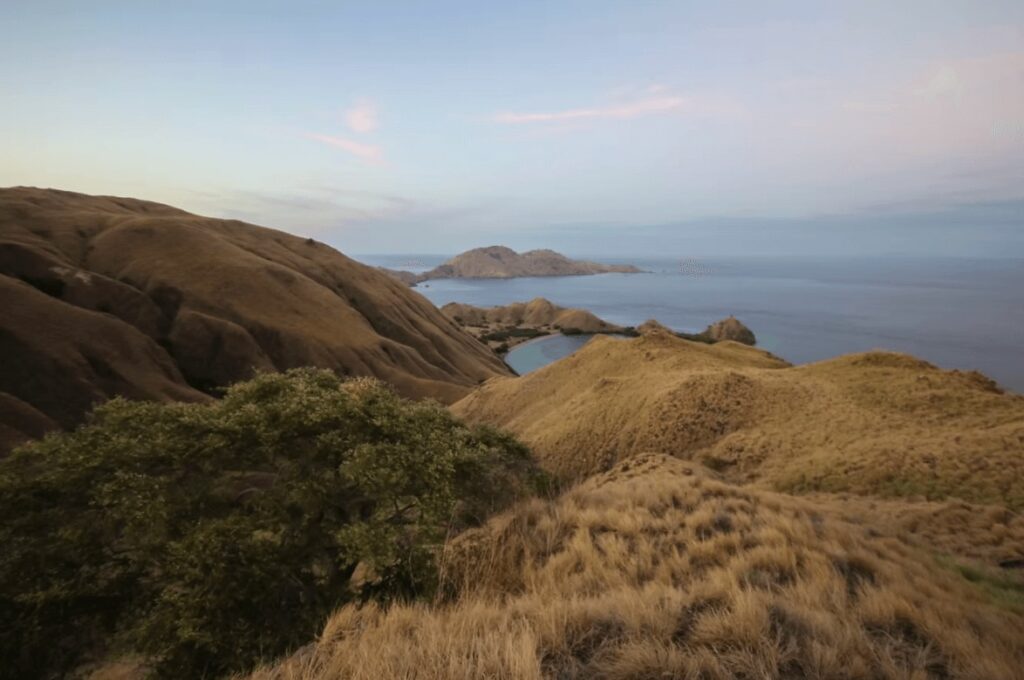
Alor
Best place for remote diving in Indonesia
Situated in the Lesser Sunda Islands is the remote island of Alor, which is rapidly becoming a bucket list dive destination in Indonesia. It offers exceptional scuba experiences for those willing to venture to this relatively untouched corner of the underwater world.
Accessible by liveaboard vessels or just a handful of dive resorts, Alor’s isolation has allowed its marine life to thrive.
Divers are regularly treated to the sight of schools of hammerhead sharks gliding gracefully through the waters. Meanwhile, pods of playful pilot whales and acrobatic dolphins add to the spectacle.
While the strong currents experienced around Alor (particularly from September to November) demand an advanced level of diving experience, there are dive sites catering to all skill levels.
The black sandy sea floor, a result of the island’s volcanic origins, provides the perfect backdrop for critter searching. In our opinion, Alor offers some of the best muck diving in Indonesia.
Meanwhile, wide-angle photographers revel in the opportunity to capture the grandeur of Alor’s bigger marine inhabitants. Highlights include the schools of barracuda and trevally that congregate in the channels.
Discover everything you need to know about scuba diving in Alor in our detailed article here.
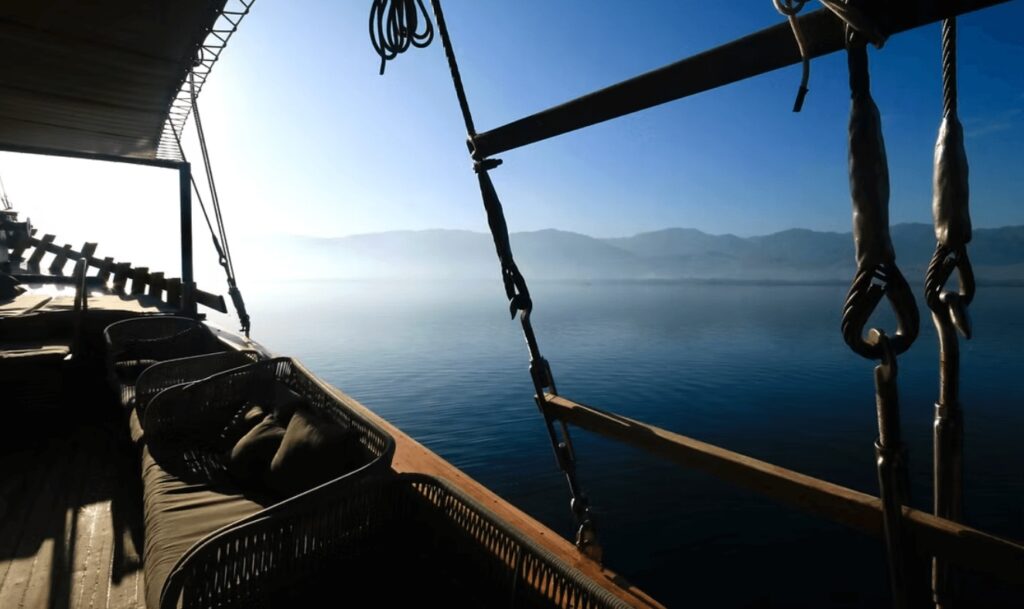
Eco-friendly dive resorts in Alor
Alor Divers
On the doorstep of Alor’s top dive sites, this eco-friendly resort seamlessly combines luxury and nature. Open-air bungalows provide natural shade from the sun’s heat, eliminating the need for energy-guzzling air conditioning.
Guests are encouraged to “leave no trace”, helping to preserve the pristine beach on which the resort is located. Integral to the eco-philosophy of Alor Divers are the use of sustainable construction materials and practices, employment and training for locals, and support for community initiatives.
Raja Ampat
Best place to dive in Indonesia for biodiversity
Raja Ampat is a breathtakingly stunning and ecologically rich archipelago located off the northwest coast of West Papua. Honestly, it’s one of the most beautiful dive destinations in Indonesia!
Comprising over 1,500 small islands, this tropical paradise is revered by marine biologists as one of the most biodiverse underwater habitats on the planet. It’s home to around 1,500 species of tropical fish and 550 different types of coral. This represents 75% of the world’s known coral varieties.
With its technicolour reefs and teeming schools of fish, Raja Ampat offers some of the best diving in Indonesia. From sharks, mantas and dugongs to diminutive creatures like the pygmy seahorse, this magnificent archipelago has it all.
Aside from its coral reefs, which remain largely untouched, Raja Ampat boasts underwater caverns and tunnels to explore. It’s no wonder the archipelago is widely regarded as not only one of the best places to dive in Indonesia, but the entire world.
Raja Ampat lies within the Bird’s Head Seascape, a massive marine protected area. It encompasses not only the “Four Kings” archipelago but also the surrounding regions of Kaimana, Triton Bay and Cenderawasih Bay.
One of the most famous dive sites in Raja Ampat, Cape Kri, has recorded 374 fish species in a single dive. This world record speaks to the area’s incredible richness.
Elsewhere, Batanta’s muck diving sites offer a window into the strange and wonderful world of macro critters. Cenderawasih Bay and Triton Bay are renowned for their incredible encounters with whale sharks.
In addition to a great choice of liveaboards and eco-friendly dive resorts in Raja Ampat, the archipelago is also home to an abundance of homestays offering budget-friendly accommodation.

Eco-friendly dive resorts in Raja Ampat
Nyande Raja Ampat
With its breathtaking views and friendly staff, this eco-friendly Raja Ampat homestay ticks all the right boxes.
Nyande’s rustic beach bungalows feature modern amenities like flushing toilets and hot showers. Guests also rave about the delicious meals served here.
Aside from its proximity to some of the best dive sites in Raja Ampat, the commitment to eco-consciousness is evident. Nyande has solar power, no single-use plastics and a sustainable waste management system in place.
“Nyande exceeds every aspect of hospitality.” – Maria (read more reviews here)
Raja Ampat Eco Lodge
Raja Ampat Eco Lodge has been carefully designed to have minimal impact on the environment. At the same time, it makes a positive difference in the local community through its conservation initiatives.
The lodge’s roomy bungalows are built with indigenous materials such as ironwood and palm leaves. All offer stunning views across the water.
Tucked away in a section of untouched rainforest is a permaculture garden that supplies a significant portion of the lodge’s food. This helps cut down on carbon emissions from food transportation and guarantees that everything is organically grown.
“A little paradise.” – Hannah (read more reviews here)
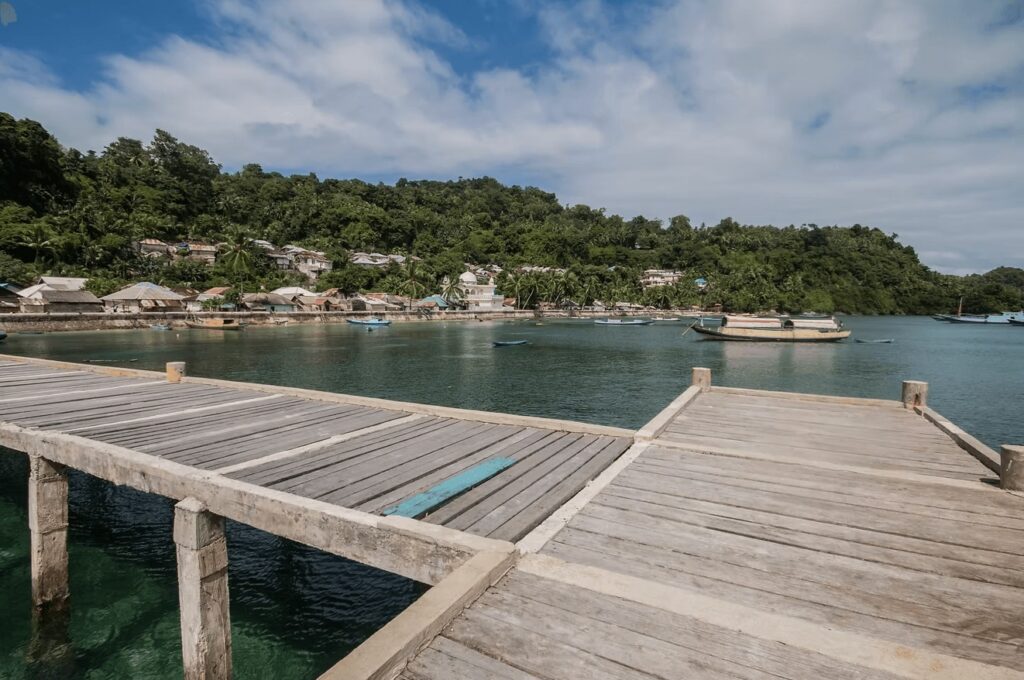
Banda Sea
Best place for liveaboard diving in Indonesia
The Banda Sea is quickly becoming one of the best liveaboard diving destinations in Indonesia. It attracts scuba enthusiasts from around the world with its incredible array of marine life and stunning underwater landscapes.
During the peak seasons of September to October and April to May, several Indonesian liveaboard operators make the journey to this remote corner of the archipelago. All are drawn by the promise of world-class diving.
The Banda Sea is particularly renowned for its exceptional wall dives and abundant macro life. But the real showstoppers are the resident populations of sea snakes at sites like Manuk and Gunung Api islands. These unique serpents, found nowhere else in Southeast Asia, have become a major drawcard.
Additionally, the Banda is also one of the rare spots in Indonesia where divers have a realistic chance of spotting large schools of hammerhead sharks. Big schools of fish, occasional reef sharks and rays, plus some of the most dramatic topography in Indonesia add to the experience.
Due to its remote location, the only way to access the Banda Sea’s underwater wonders is by liveaboard.
Many include stops in Ambon Bay, which is a popular destination for muck diving enthusiasts. It’s one of the best Indonesia dive spots for macro photography. This long, protected bay is home to rare and unique marine creatures, including the otherworldly wonderpus and flamboyant cuttlefish.
Eco-friendly dive resorts in Ambon Bay
Spice Island Divers
Built to have minimal impact on its surrounding environment, Spice Island Divers is a boutique dive resort in Ambon. It boasts a prime setting, providing easy access to the famous “Twilight Zone” and other popular critter hotspots. Additionally, it’s just a short distance from the airport.
In addition to excellent facilities, this Ambon dive resort also has a dedicated team that goes the extra mile to ensure guests have an amazing experience, both underwater and on land.
Wakatobi
Best place for a luxury dive vacation in Indonesia
Wakatobi is a spectacular dive destination in the Tukangbesi archipelago, just off the southern coast of Sulawesi.
Reaching this underwater paradise requires a bit of effort. But in our opinion, the journey is well worth it. With such healthy marine ecosystems, Wakatobi offers some of the best coral reef diving in Indonesia.
While the area has faced some environmental challenges in the past from practices like dynamite fishing, growing conservation efforts have helped to restore the vitality of Wakatobi’s reefs.
Now protected within Wakatobi National Park, the area’s 40 or so dive sites are best explored from the luxurious Wakatobi Dive Resort. It boasts a house reef filled with colourful corals, sponges and an incredible diversity of marine life.
For underwater photographers, Wakatobi is a dream destination and it’s one of the
safest places to dive in Indonesia for beginners. There’s an abundance of unique macro critters like nudibranchs, seahorses and frogfish.
And while large pelagic species may not be as abundant here as in other regions, the biodiversity of Wakatobi’s underwater realm more than makes up for it.
Eco-friendly dive resorts in Wakatobi
Wakatobi Dive Resort
This environmentally conscious dive resort in Southeast Sulawesi is a haven for scuba enthusiasts and nature enthusiasts alike. It offers convenient access to some of the best dive sites in Indonesia, including a five-kilometre-long house reef just off the shore.
With the assistance of the local community, Wakatobi Dive Resort played a key role in creating one of the largest privately funded marine reserves on the planet. It’s a testament to their commitment to marine conservation.

Lembeh Strait
Best place for muck diving in Indonesia
Located in North Sulawesi, Lembeh Strait is rightly known as the “world’s capital for muck diving”. This narrow stretch of water between the islands of Lembeh and Sulawesi is home to an astounding array of small marine creatures.
From the bizarre and whimsical, like the yawning hairy frogfish with its bulging eyes and fleshy appendages, to the alien-like flamboyant cuttlefish with its iridescent displays, the diversity on offer in Lembeh is simply staggering.
Juvenile fish species like barramundi and pinnate batfish share the reef with predatory snake blennies. At the same time, delicate harlequin shrimp and fascinating mandarin fish put on dazzling shows.
Giant stinging anemones the size of dinner plates provide a dramatic backdrop. It’s also not uncommon to spot camouflaged rhinopias and other cryptic creatures that are nearly impossible to see with the naked eye.
The sheer number of unique macro subjects that divers can cross off their checklist in Lembeh is mind-boggling. It goes without saying this is one of the best places for
underwater photography in Indonesia.
But Lembeh offers more than just incredible biodiversity. The diving infrastructure is excellent, with photographer-friendly resorts and highly skilled local guides who can lead you to the tiniest critters imaginable.
Discover everything you need to know about scuba diving in Lembeh in our detailed article here.

Eco-friendly dive resorts in Lembeh
K2 Lembeh Dive Resort
Constructed in a traditional Minahasa style, the villas at this boutique Lembeh dive resort blend modern comforts with the aesthetics of the region.
Each has been thoughtfully positioned to provide guests with unobstructed vistas across Lembeh Strait and the mountain range that frames Bitung.
By eliminating single-use plastics and partnering with local schools to implement sustainability initiatives, the eco-friendly Lembeh dive resort is ensuring that the benefits of its operations are shared with the people who call this beautiful corner of the world home.
“Fantastic dive resort in Lembeh Strait.” – Miguel (read more reviews here)
Lembeh Resort
Nestled in a secluded cove, this Lembeh dive resort is perfect for anyone seeking a luxury dive vacation in Indonesia. The hillside cottages offer stunning views of the strait, with some featuring their own private infinity pools.
Committed to sustainability, the resort also operates the Lembeh Foundation to aid local communities. Guests can enjoy daily dive excursions and underwater photography workshops led by the resort’s experienced dive team.
“Lembeh Resort is the yardstick that we measure all other dive resorts against.” – Keith (read more reviews here)
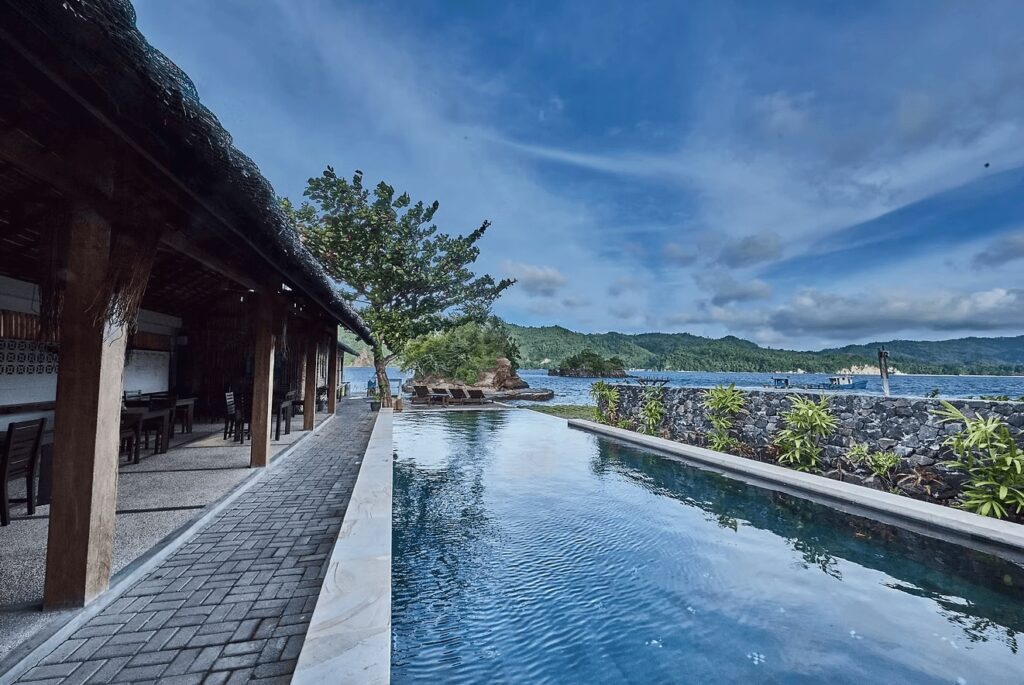
Cocotinos Lembeh
Situated in the middle of Lembeh Strait, this eco-friendly dive resort provides direct access to some of the region’s most iconic underwater sites.
Cocotinos’ on-site dive centre is staffed by experienced, knowledgeable guides. They’ll lead you to an array of mesmerising macro subjects and unusual critters.
For those with a passion for underwater photography, the resort’s dedicated camera facilities are among the region’s best.
“Perfect location to dive the Lembeh Strait.” – Patrick (read more reviews here)
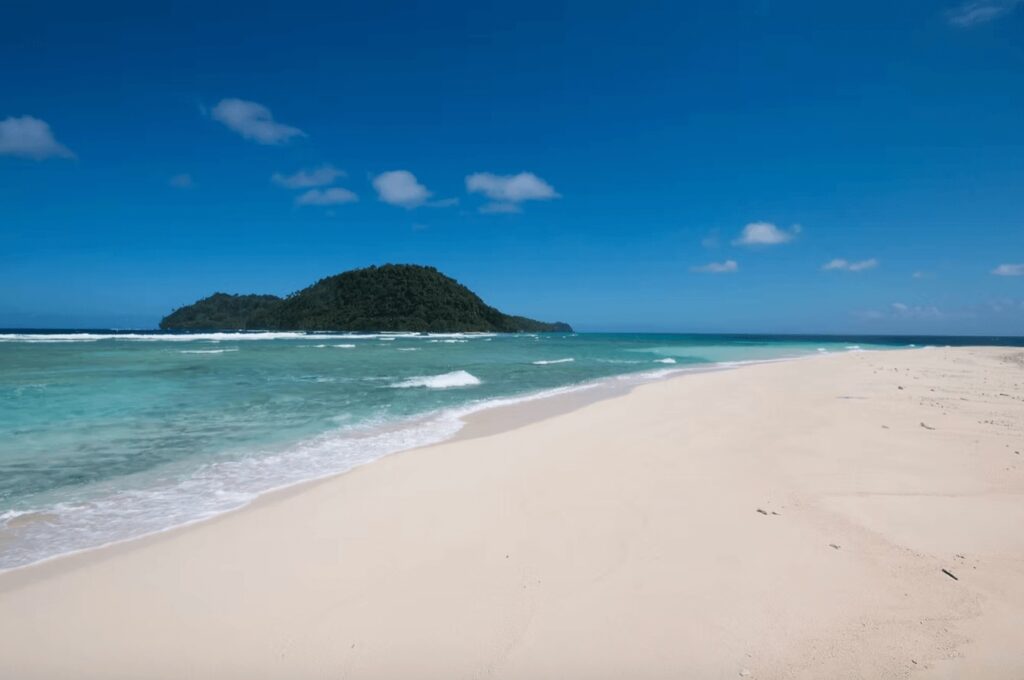
Bunaken
Best place for wall dives in Indonesia
Easily combinable with a trip to Lembeh Strait is a dive vacation in Bunaken National Park. It plays host to some of the most breathtaking wall dives in Indonesia.
Nearby Bangka Island boasts untouched reefs adorned with a kaleidoscope of soft corals in every imaginable hue. Along Bangka’s towering underwater cliffs, divers can encounter larger pelagic species like reef sharks, tuna and barracuda – often seen swirling in tornado-like formations.
Plunging hundreds of feet, the coral-encrusted walls of Bunaken teem with a dizzying variety of marine life. Here, you’ll find everything from reef sharks and schools of silvery baitfish to sea snakes and the occasional eagle ray.
If you’re lucky, you may even see the resident pods of dolphins and pilot whales that frequent these waters. Meanwhile, the tiny yet captivating pygmy seahorse and an array of shrimp species hide amidst the reef’s nooks and crannies. Bunaken diving offers something for everyone!
Discover everything you need to know about scuba diving in Bunaken in our detailed article here.
Eco-friendly dive resorts in Bunaken
Bunaken Oasis
Nestled in the heart of Bunaken Marine Park, this luxurious eco-resort sprawls across seven hectares of tropical bliss. With only 12 cottages offering stunning ocean views, you can really connect with the beauty of nature.
The resort’s cutting-edge water purification system not only ensures clean water but also reduces plastic waste. Aside from its sustainability credentials, Bunaken Oasis offers gourmet meals and rejuvenating spa treatments.
“Heaven on earth!” – Luka (read more reviews here)
Kuda Laut Boutique Dive Resort
Situated on the beautiful shores of Siladen, Kuda Laut provides stunning views of Bunaken and the North Sulawesi coastline. The resort has a cosy feel with just eight cottages and four superior rooms, all designed with a tropical touch.
The dive centre at this Bunaken eco-dive resort is well-equipped with a large drying room and individual lockers for your gear. Plus, there’s an air-conditioned camera room for photography enthusiasts.
Rather than constructing a pier, Kuda Laut launches boats directly from the beach, helping to protect the reef.
“Easily a highlight of our trip!” – Tina (read more reviews here)
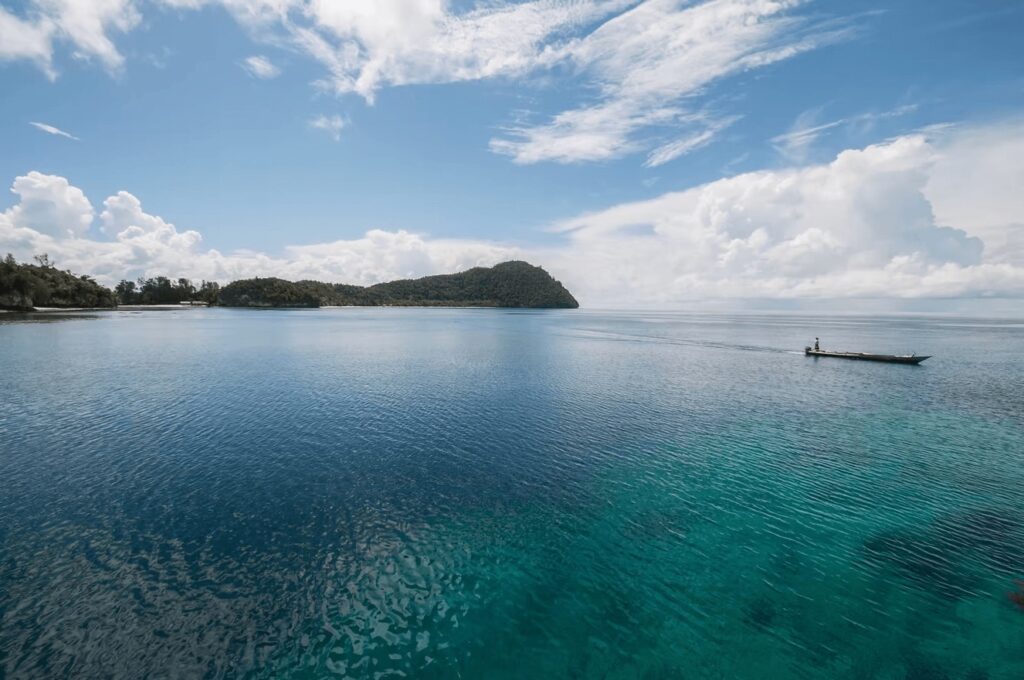
Derawan
Best place to dive with whale sharks in Indonesia
This cluster of small islands off the coast of East Kalimantan (Borneo) is an underwater wonderland. In our opinion, it’s home to some of the most unique marine ecosystems on the planet.
Chief among its natural wonders is the famous jellyfish lake, one of only three such bodies of water known to exist worldwide. Snorkelling in this surreal lake, where thousands of stingless jellyfish gracefully drift and pulse, is an unforgettable experience.
But Derawan’s riches extend far beyond this singular attraction. The region is also renowned as one of the best destinations in the world for swimming with whale sharks.
Visitors can swim alongside and observe these filter-feeding behemoths as they congregate to feed. It’s an awe-inspiring sight that is sure to leave a lasting impression.
Scuba diving in Derawan also means encounters with schools of barracuda, eagle rays and reef sharks, as well as sea turtles and manta rays. The diving in Derawan is world-class!
That being said, the infrastructure to support these activities is still developing compared to more established dive hotspots.
Nevertheless, a growing number of reputable liveaboard operators and eco-resorts are making Derawan increasingly accessible. This allows adventurous divers to discover this untamed corner of the Coral Triangle.
Discover everything you need to know about scuba diving in the Derawan Islands in our detailed article here.
Eco-friendly dive resorts in the Derawan Islands
Nunukan Island Resort
Situated on the southern tip of Maratua Atoll, this eco-friendly Derawan dive resort enjoys a blissful setting on the island of Bakungan.
A fantastic house reef can be accessed directly from the resort’s private jetty. Meanwhile, two untouched atolls further south – Mataha and Bilang Bilang – beckon with their untouched beauty.
Each of the bungalows blends harmoniously with the surrounding environment, utilising local materials typical of the region. Guests can enjoy the convenience of solar-powered hot water, highlighting the resort’s commitment to sustainability.
“Nunukan really IS paradise on earth!” – Cheryl (read more reviews here)

Bali
Best place to dive with Mola Mola in Indonesia
The “Island of the Gods” is undoubtedly one of the most popular tourist destinations in Indonesia, and for good reason. Not only is it a captivating cultural hub with Hindu temples, terraced rice paddies and vibrant local traditions, but it also boasts some wonderful dive sites.
This makes it an irresistible draw for underwater enthusiasts wanting to pair their dive vacation with cultural experiences on land.
The island’s eastern and northern coastlines, as well as the nearby island of Nusa Penida, are home to a diverse array of dive sites. There’s everything from fascinating wrecks to colourful coral gardens.
One of the best dive sites in Bali is the USAT Liberty Wreck in Tulamben. It can be easily accessed from the shore, with bumphead parrotfish, Napoleon wrasses and sea turtles regularly spotted.
Off the northwest coast of Bali is magnificent Menjangan Island, home to healthy coral reefs and spectacular walls. The dive-centric town of Pemuteran serves as an attractive base.
Meanwhile, on the east coast of Bali is Amed, renowned for its critter diving. Here you’ll find some of the most accessible muck diving in Indonesia.
Diving in Bali is also notable for pelagic encounters, with the chance to spot massive schools of fish. A highlight is seeing the elusive Mola Mola, or ocean sunfish.
Nusa Penida is a reliable spot for sightings of these bizarre-looking creatures, which are best spotted between July and October.
Beyond the water, Bali’s topside delights are no less captivating, with stunning beaches, world-class surf spots and the opportunity to immerse yourself in the island’s rich cultural heritage.
With a wealth of dive operators and resorts catering to all budgets, Bali is not only an easy and affordable Indonesian diving destination but also an ideal launching point for explorations further afield.
Eco-friendly dive resorts in Bali
Baliku Dive Resort
Combining traditional Balinese craftsmanship and the more eclectic “Bali modern” style, this eco-friendly boutique resort perches atop a hill overlooking the island’s east coast.
Each free-standing villa boasts breathtaking views, either towards the neighbouring island of Lombok or the towering mountains in the distance.
For those seeking underwater adventure, the resort’s fully licensed dive centre, Adventure Divers Bali, offers fantastic opportunities to discover Amed’s marine marvels.
“Stunning views, spacious rooms, friendly staff.” – Tamar (read more reviews here)
Ceningan Divers
Situated on serene Ceningan Island, this eco-friendly Balinese dive resort is built using local techniques and natural materials. As a result, it blends in beautifully with the surrounding mangrove forest.
In addition to daily dives around Nusa Penida and Nusa Lembongan, it offers a range of certification courses for all levels.
Guests can be confident that Ceningan Divers is a certified Green Fins member, dedicated to preserving the marine environment through sustainable methods.
“The diving was outstanding with tremendous diversity and quantity of fish.” – Kip (read more reviews here)

Plataran Menjangan
Tucked away within West Bali National Park, this unique eco-retreat features several Joglo-style villas. They seamlessly blend traditional Indonesian architecture with all the modern amenities you could desire.
In addition to daily dives, this luxury resort near Menjangan Island offers guided treks and kayaking excursions, not to mention gourmet dining at the end of the day.
“Perhaps the best hotel I’ve stayed at in Bali.” – George (read more reviews here)
Discover more eco-friendly hotels and resorts in Bali in our detailed article here.
FAQs about diving in Indonesia
Is Indonesia good for scuba diving?
Indonesia’s reputation as a scuba diving mecca is well-deserved, with this island nation boasting an incredible diversity of marine life.
Encompassing over 17,000 islands, it is home to an astounding array of coral reef ecosystems. There’s everything from hard coral gardens in Raja Ampat to muck diving sites in Lembeh Strait with its mesmerising macro critters.
Scuba diving in Indonesia offers the chance to encounter over 2,000 different types of fish and more than 600 species of corals. That’s three-quarters of the world’s total coral diversity!
Pelagic life is equally impressive, with regular sightings of manta rays, whale sharks and schools of barracuda.
Catering to this immense popularity, Indonesia has exceptional scuba diving infrastructure. You’ll find luxurious liveaboard vessels (providing access to remote dive sites) and high-end resorts with all the creature comforts you could desire.
Not only is Indonesia an affordable place to learn to dive, but the experiences on offer will impress even seasoned scuba enthusiasts.
Where is best to scuba dive in Indonesia?
Indonesia is a world-renowned scuba diving destination, offering an incredible array of underwater landscapes to explore. Each region has its own highlights, whether its schooling sharks, surreal-looking mola-mola or manta rays flying above cleaning stations.
One of the best places to dive in Indonesia is Komodo National Park off the island of Flores. Here, there’s the opportunity to spot iconic Komodo dragons on land and come face-to-face with sharks, manta rays and other pelagic species in the nutrient-rich currents.
Moving north, Bunaken National Park and Lembeh Strait in Sulawesi offer some of the best macro diving in Indonesia. They’re among the top places to dive in Indonesia for photographing tiny and bizarre-looking critters.
The remote archipelago of Raja Ampat in West Papua is widely regarded as one of the most biodiverse underwater environments in the world. It’s home to some of the most beautiful dive sites in Indonesia.
As a result, it’s high on the bucket lists of many scuba divers. For coral diversity, we think Raja is one of the best places to dive in Indonesia.
Lesser known but no less impressive are places like Alor, a remote volcanic island whose cold upwellings attract myriad marine life. Word is out that Alor is incredible underwater and it’s rapidly becoming a bucket list dive destination in Indonesia.
One of the most popular places to dive in Indonesia is Bali. Here, you’ll find vibrant coral reefs and one of the nation’s most fascinating wrecks. It’s home to some of the best beginner dive sites in Indonesia.
That being said, this is also one of the busiest places to dive in the island nation. So you should expect crowded underwater conditions at some of Bali’s best dive sites.
What are the best months for diving in Indonesia?
The best time to dive in Indonesia varies depending on the specific region and what you hope to see during your underwater adventures.
In Raja Ampat, the dry season from October through April is generally considered the best time to dive when the weather is more stable and with calmer seas. During this time, visibility is at its best, often exceeding 30 metres (100 feet).
In Bali, the best conditions tend to occur from March through mid-June and again from September through November. In contrast, the rainy season from December to February can impact visibility.
Meanwhile, July and August can be quite windy, making boat rides to sites like Menjangan Island a bit more turbulent. Over on Nusa Penida, the best time for spotting mola mola (oceanic sunfish) is from July through September.
Komodo’s prime diving season falls between May and October when dozens of liveaboard vessels ply the islands.
In contrast, Wakatobi is usually at its best during the transition periods at the beginning and end of Komodo’s high season.
The Banda Islands, on the other hand, tend to offer their best diving from March through April and again from September to December.
Do you need a wetsuit to dive in Indonesia?
Water temperatures in Indonesia range from 21°C (70°F) in the Sumba Strait and southern Komodo up to around 30°C (86°F) in the Halmahera Sea and northern Raja Ampat.
While the air temperatures in Indonesia tend to be balmy, you will need a wetsuit, particularly if you are diving multiple times a day.
In the warmer waters of Indonesia’s north, a 3mm wetsuit will usually suffice. However, you may want to bring an extra skin to be on the safe side.
If you’re heading to southern Komodo, the Sumba Strait and Alor, you’ll probably need more protection, particularly at dive sites prone to cold upwellings. Either bring a 3mm wetsuit with layers to put on (and take off) or a 5mm wetsuit with a hood and gloves.
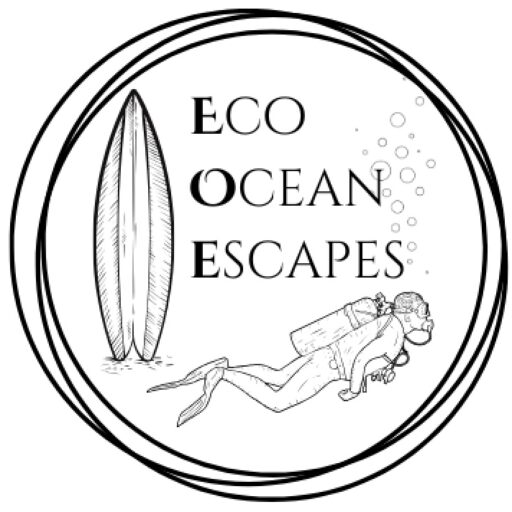
PLAN YOUR TRIP WITH OUR FAVOURITE RESOURCES:
Find hotels and resorts via Booking or Agoda
Book tours and experiences via Viator or GetYourGuide
Find a rental car via Discover Cars
Book flights via Kiwi or Booking
Search for buses and trains via 12Go or Omio
Get travel insurance via SafetyWing
Buy a digital eSIM with Airalo
By purchasing through our links, you’ll be supporting our website at no additional cost to you
About the authors
We are a team of passionate divers and surfers with decades of combined experience in the water and travelling to all corners of the globe. After years of chasing waves and descending into the deep blue, we’ve created this resource to highlight sustainably run surf camps, eco-friendly dive resorts and conservation-focused ocean trips to help inspire your next adventure.
Eco Ocean Escapes was born out of a love of the ocean, an obsession with travel and a concern about the impacts of our adventures on the environments we explore. Despite the benefits that surf and dive tourism can bring to local communities, we recognised that ocean-based adventures are not always managed in a sustainable manner.
Through our articles, we hope to inspire those seeking a responsible surf or dive trip that is all about supporting local communities, preserving our coastal environments and the incredible marine species that inhabit our oceans.
-
Sustainable Surf Tourism and Respecting Local Communities
Surf tourism has exploded over the last two decades. With travel becoming more accessible and social media exposing hidden spots, once-remote breaks in Indonesia, Central America, Morocco and the Pacific Islands are now iconic stops on global surf circuits. While surf travel brings income, jobs and global attention to coastal towns, it can also disrupt…
-
Inspiring Citizen Science Projects for Surfers + How to Get Involved
As surfers, we are intimately connected to the ocean – its rhythms, its wildlife and its health. Because of this relationship, many of us are looking for meaningful ways to protect the marine environments we love. One of the simplest and most impactful ways we can do this is by joining citizen science projects. These…
-
Understanding Marine Protected Areas (MPAs): Why divers should care
If you’ve spent time underwater (as a diver or snorkeller), you’ve probably noticed something: not all sites are beacons of health. Some reefs appear vibrant and full of life, while others show signs of stress – broken coral, few fish or algae-covered rocks. One of the biggest factors shaping the health of our oceans is…
-
Costa Rica: Best Marine Parks for Scuba Divers + Eco Dive Resorts
Costa Rica is a paradise for eco-conscious travellers and underwater explorers are no exception. With its healthy coral reefs, pelagic-rich waters and some of the most progressive environmental policies in the world, the country is a dream destination for those who want to dive responsibly. We’ve been lucky enough to visit Costa Rica several times…
-
Eco-Diving: Best Destinations for Sustainable Scuba Travel
As humans inspired by the underwater world, there is plenty of incentive to protect our coral reefs. Here at EcoOceanEscapes, we want to do our bit to save endangered marine species and keep our oceans free of trash. One impactful action we can all take is to choose sustainable diving destinations. These are nations (or…
-
Eco-Friendly Diving: How to Be a Sustainable Scuba Advocate
Understand the environmental impacts of diving and sustainable scuba practices in this comprehensive guide to eco-friendly diving. Any diver will tell you that being underwater is an incredible experience. It’s a world that not everyone has the opportunity to explore and the encounters we have with marine creatures can be life-changing. Watching manta rays soar…

We are a team of passionate divers and surfers with decades of combined experience in the water and travelling to all corners of the globe.
After years of chasing waves and descending into the deep blue, we’ve created this resource to highlight sustainable surf camps, eco-dive resorts and conservation-focused ocean trips to help inspire your next adventure.
Eco Ocean Escapes was born out of a love of the ocean, an obsession with travel and a concern about the impacts of our adventures on the environments we explore.
